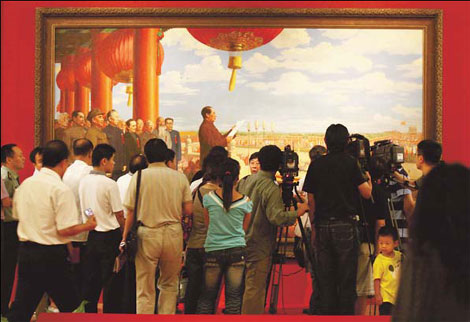Life and Leisure
Art for the masses
By Zhu Linyong (China Daily)
Updated: 2010-09-07 08:07
 |
Large Medium Small |
While his museum now draws at least 350,000 visitors annually in contrast to the average 120,000 visitors over the past two decades, Zhu insists art museums must work harder to improve their services, especially for the elderly, children and disabled persons, devise creative exhibitions, and hold educational programs for both adults and children.
"Visiting an art museum is gradually becoming an integral part of life for urban people," says An Yuanyuan, an official with the Ministry of Culture.
|
Crowds at a National Museum of China exhibition held to celebrate the 60th anniversary of the founding of New China. Jiang Dong / China Daily |
But some provincial-level art museums such as the Sichuan Art Museum have taken the initiative to hold "exhibitions on the move" programs for rural people since May last year.
Zhou Wenhan, a young art critic in Beijing, believes public art museums complement commercially-driven art galleries in places such as the 798 Art Zone in showing "what is good and what is bad art".
Private museums, with their smaller collections, cannot meet the growing cultural needs of an increasingly affluent population, he says.
The nation's first modern museum - the Nantong Museum - was built in 1905 by entrepreneur Zhang Jian, in Jiangsu province.
In 1936, the Kuomintang government established China's first publicly funded art museum - the National Art Museum of China in Nanjing.
In the first three decades of New China, there were fewer than 20 art museums.
From 1976-2004, China had about 100 art museums.
By the end of 2008, China had reportedly more than 1,700 art museums, alongside thousands of art galleries set up by individuals and corporate entities.
Still more art museums are mushrooming on China's urban landscape.
Most recently, the Jiangsu Art Museum, with a floor space of more than 10,000 square meters opened to the public for free, offering not just exhibitions, but also a variety of public art education programs for different age groups, according to museum dean Gao Yun.
A behemoth private art museum, The Himalayas Art Museum, covering a floor space of over 28,000 square meters, opened recently in Shanghai.
Yang Yingshi, a researcher in public art education with the National Art Museum of China expressed optimism for the future.
"China's art museum sector has yet to usher in a gold era," he says.
